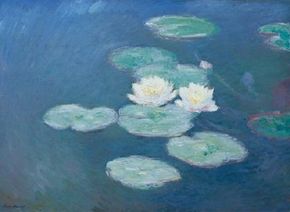Claude Monet (1840-1926) gave the Impressionist movement its name and was one of its most successful and best-known artists. Before Impressionism was fashionable or accepted by the artistic elite, Monet was on the forefront of this revolutionary style.
Paintings such as Impression Sunrise and La Gare Saint-Lazare exemplify the Impressionist style, with their hazy portrayals of light, air, and motion, allowing the essential elements of the work to shine through. These works drew harsh criticism from many of Monet's contemporaries, but some realized that Monet was exploring a whole new way to paint.
Advertisement
Throughout Monet's life, his paintings focused on outdoor scenes, be they landscapes featuring the Seine river, haystacks in the fading sun, close-ups of blue-green water lilies, or even a portrayal of turkeys in a field. Many themes captured Monet's artistic attention, but nature was always his primary inspiration.
